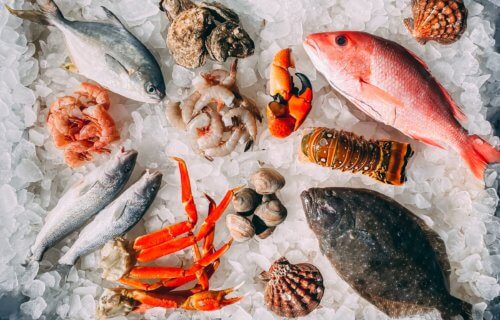VANCOUVER, British Columbia — Seafood lovers could soon be out of luck if they’re hoping to order salmon in the Pacific Northwest. A new study finds warmer ocean temperatures due to climate change are changing what’s on the menu at many seafood restaurants.
In a review of local menus featuring fresh, locally-caught seafood between 1880 and 2021, a team from the University of British Columbia found species like sockeye salmon are leaving the Vancouver restaurant scene. In their place, diners are likely seeing more eateries offering Humboldt squid, as the local ocean life changes over time.
Researchers looked at the average preferred temperature across all species in the Vancouver area for four different time periods dating back to the nineteenth century. Results show the highest preferred temperature for aquatic animals exists right now in the 2020s. Present-day seafood in the area are swimming in temperatures around 14 degrees Celsius; that’s three degrees warmer than in 1880 and nearly five degrees hotter than in 1962 — the coolest average temperature in the study.
“We set out to discover if warming waters due to climate change are already affecting what seafood restaurants serve in their menus,” says senior author Dr. William Cheung, professor and director of the UBC Institute for the Oceans and Fisheries, in a university release.
“While it’s not a case of cause and effect, our findings indicate that the seas around Vancouver were warming during the studied time periods, so fish species that prefer warmer waters dominated there. It’s likely that they were more available to catch for sale, and so local seafood restaurants offered more of these types of fish.”

Tonight’s special: squid and sardines
Study authors found two species are benefiting from the warmer ocean temps, making it more likely you’ll see them on restaurant menus in the coming years. One of those is the Humboldt squid, which scientists say are expanding their territory further north as temperatures rise.
The other is the sardine. Although sardine catches have dropped off since the 1940s, researchers expect the species to make a comeback in the Pacific Northwest thanks to the warming waters.
“Humboldt squid is not something that we see in restaurant menus at all before the 1990s but we see it is much more common now, and sardine, which has historically disappeared in seafood menu, may return in the future” says Dr. Cheung.
“We know sockeye salmon isn’t doing well in B.C. That means local sockeye might be less available in the near future, and it’s likely local restaurants may choose other salmon species, or other fish species.”
Specifically, the researchers found the biggest changes on local seafood menus took place between 1981 and 1996.
“That’s when lots of the bigger changes in temperature occurred, and that’s also the time when some of those changes are really starting to have bigger and more obvious effects on the fish stocks,” Dr. Cheung notes.
What’s causing this seafood menu shift?
Scientists explain that an extreme marine heat wave called “the Blob” could be responsible for the quickening pace of menu changes in the Vancouver area. The team also cites the abnormally hot weather over the last few decades, which is causing shifts in the distribution of exploited species in the area.
“Climate change is already affecting everyone, not only the fishermen who are catching the fish, but the people who go to restaurants and eat fish,” the study author adds. “We can expect to see less stable availability of seafood if we consume local catch. Expect that we may not be able to get all the same seafood year-round, or all the time.”
As for non-climate factors, the team says changes in fishing activity and the growth of imported supplies over the years also influences what’s on local menus. Researchers tried to account for these factors during the study, ultimately concluding that ocean temperatures are still the biggest driver of the changing seafood picture.
“Given the other evidence of how fish and fisheries are responding to climate change, the trend we detected is likely to also be related to the changing oceans,” Dr. Cheung concludes.
The study is published in the journal Environmental Biology of Fishes.

